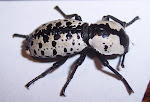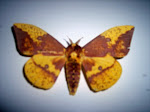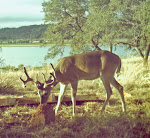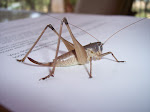Good Morning! The coffee is going down good and it’s nice to be back. I’ve been up in New England for a few weeks visiting friends (the foliage in Vermont can’t be beat). Vacation is great but Mystic Shores is where we decided to retire, and where my wife Pat makes our house a home. I know I’m living in the right place when I walk through the door and the comfort descends around me like a warm blanket.
Here at Mystic Shores, Pat and I enjoy some great neighbors and we are getting more all the time. If one definition of a great neighbor is that they share with their community, then we have a great neighbor in the Lyons family over on Saga and Spiritual Pass. Jeff and Katie have sent me some wonderful pictures to share with you all today. These photos capture the essence of one of the most beautiful and recognizable animals that we have living amongst us here in Mystic Shores: the Gray Fox!
(Kingdom; Animalia, Phylum; Chordata, Class; Mammalia, Order; Carnivora, Family; Canidae, Genus: Urocyon, Species: U. cinereoargenteus)
What a beauty! It looks like this vixen (it is probably a female) has decided to take a short rest from raising her family and pose for us on Jim and Paula Rieker’s stone wall. This is uncommon behavior because they are normally shy and elusive creatures.
Gray Foxes are found throughout the southern half of North America and throughout Central America. They can and do live in all four deserts of the American Southwest. The Gray Fox (also called the Desert Fox) is common here in the Hill Country of Texas and I frequently catch them on my trailcam pictures in Mystic Shores, on both sides of Rt 306. The reason they aren’t seen more often is because they are nocturnal and hunt primarily at night. If they do move about during the day, their coloration gives them outstanding camouflage.
Their fur is typically grizzled gray on top, with a white throat patch. It is rusty red along the sides (which sometimes gets it incorrectly identified as a Red Fox, which also has black stockings) and the tail has a black mane and tip. The dark muzzle is elongated and they have forward pointing ears. All of these features can be noted in the picture above.
A Gray Fox is smaller than a coyote, which is the other wild member of the dog family that we have here in Mystic Shores. A mature fox adult will weigh 9 or 10 pounds, with the females being slightly larger than the males. They average about 36 inches in length with a bushy tail about 15 inches long.
The Gray Fox is the only member of the dog family that can climb trees! Their strong, curved claws are adapted for gripping and this allows them to climb confidently. When they leave the tree, they hop from limb to limb and then slowly descend backwards down the trunk like a house cat. This unique ability to climb trees is useful when evading threats (domestic dogs or coyotes) and when foraging for roosting birds to eat.
They feed primarily on small mammals and rodents, and cottontail rabbits and mice make up the bulk of their diet. They are an omnivore, however, and foxes will also eat eggs, insects, fruits, acorns and berries when available. I have even seen a pair of foxes feeding along side of deer at my corn feeder one night. Once, early one May morning, I observed a male Gray Fox moving east along the shore of the Guadalupe River behind my house with a large rodent in his jaws. He had caught a ‘nutria’ that night, which is a marshland animal that resembles a small beaver. My guess is that this male fox (called a dog fox) had been hunting over on Charles and Denise Pruski’s land at the end of Pacific Place in the Peninsula. There are extensive marshes behind the Pruski’s lots right now, probably 20 to 30 acres of wetlands, since the water level in the river is so low. This fox was probably a male heading back to deliver the meal to a vixen and their pups in their den. It might even have been the mate to Katie’s vixen.
I say that the fox was a male because, at that time of the year, the male provides food for the whole family. After breeding in January (they are monogamous), the vixen bears from 3 to 7 pups in March, a gestation period of about 50 days. The baby foxes are blind and completely helpless for about two weeks, but the kits will begin to venture out of their den (under the vixen’s watchful eyes, of course) when they are about five weeks old. The kits are weaned by 10 weeks. Throughout this period the male is the provider. The family stays together until the late fall, by which time the young have their permanent teeth and have reached sexual maturity. The fox family then separates and the young disperse.
This picture, also by Katie Lyons and taken in April, is of three fox pups (there were actually four in the litter) that were romping around off the end of the deck of the Lyons’ home on Spiritual Pass. This was probably one of those early exploratory family trips to familiarize them with their new world. I can just imagine the vixen nearby, thinking that it was time to get the kits back to the den for their afternoon naps.
The den sites for the Gray Fox are often hollow trees, but sometimes they will enlarge the burrow of another animal into a 50 foot long tunnel with multiple exits and side chambers, used for food storage and to transfer the young, once a chamber becomes too soiled to inhabit.
Gray Foxes have been known to live up to 10 years of age in a zoo environment, but their longevity in the wild is certainly much less.
A Gray Fox can reach a speed up to 28 mph for a short distance but they are sprinters, not distance runners. This brings to mind a sighting Tom Prosch, over on the end of Arthur Ct, had not too long ago of a Jack Rabbit loping along up the hill behind his house. Now, a Jack Rabbit is about two thirds the size of a fox but can run 30 mph all day and 45 mph in a pinch. They can really cover ground when they want and the rabbit that Tom saw was moving right along. A couple of minutes later, Tom saw a Gray Fox on the trail of the Jack Rabbit with nose down and a determined look in his eye. (A little literary license is being used here). Anyway, twenty minutes later Tom spots the same fox walking along, on the same path, going in the opposite direction with tongue lolling and head drooping. I guess the moral of this story is that the fox doesn’t always get the hare.
The fox has a two thousand year old reputation for being a sly and sneaky rascal. The fables of Aesop and the lessons of Br’er Fox come to mind. In addition, all of the Native American cultures have ancient stories based on the fox outsmarting something. Most of us were raised hearing about what happens when the fox gets into the henhouse, and I still recall my mother reading me The Fox and the Hound.
Personally, I think that the fox’s reputation isn’t completely deserved. To me, our Gray Fox is an exceedingly beautiful and efficient predator that has evolved to be at the top of the food chain. That evolution has given the fox an instinctive approach to life that is more stealthy than sneaky and more clever than sly. The Gray Fox is a great neighbor for us to have.
Many thanks to the Foxy Lady from Spiritual Pass in bringing this wonderful creature to our attention.
Clay















